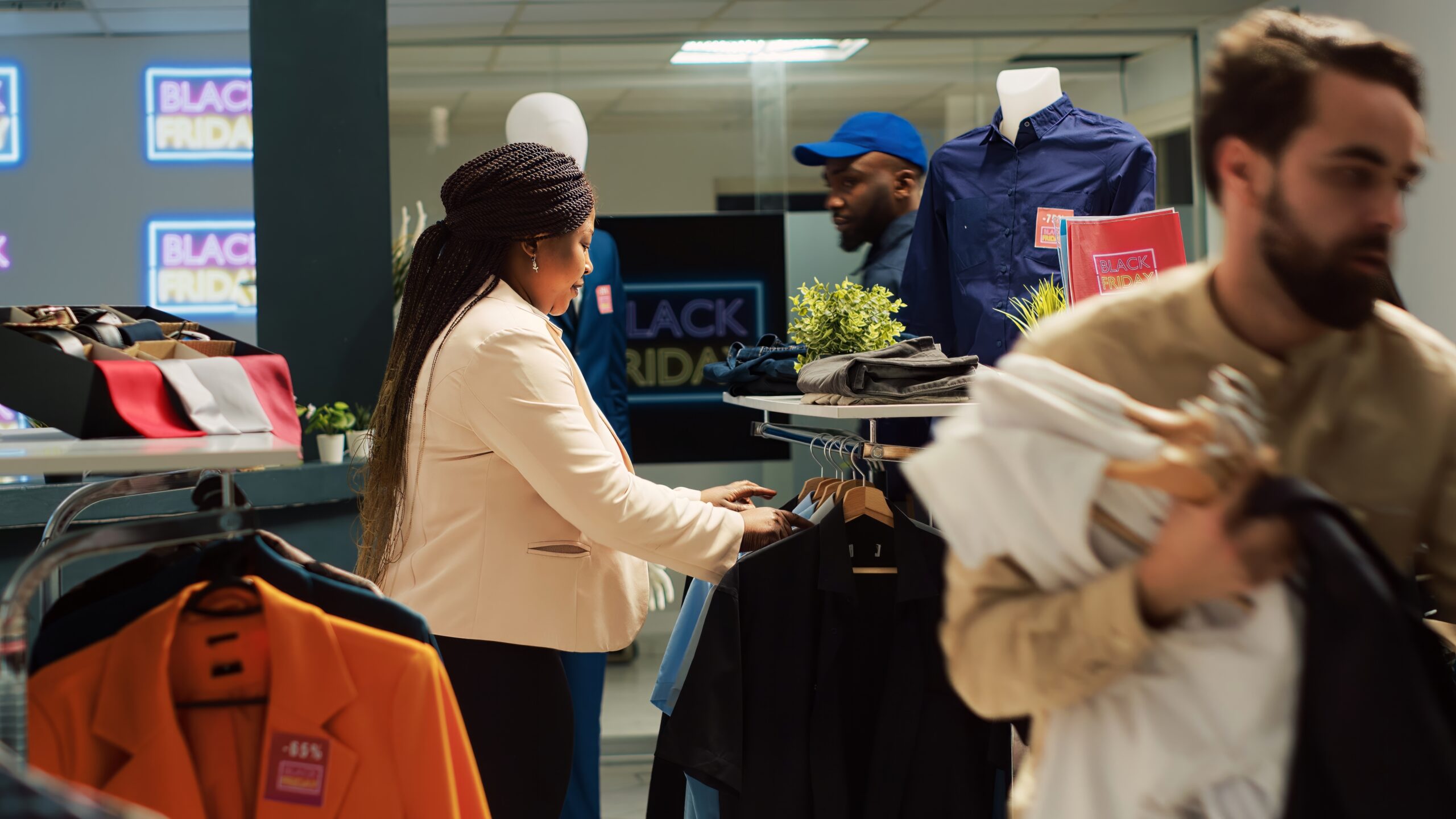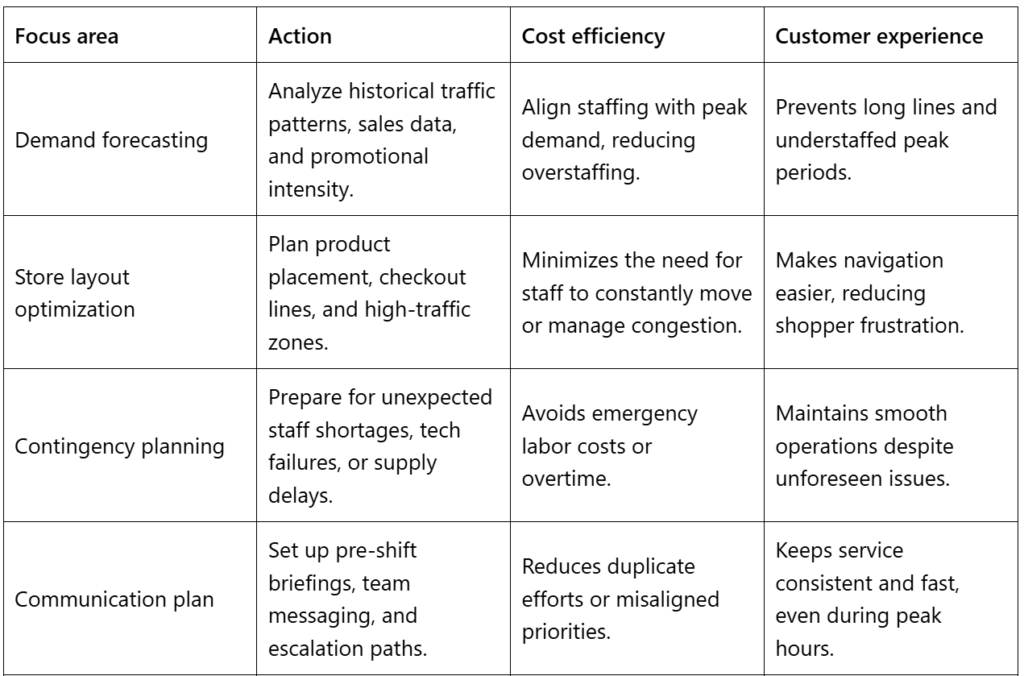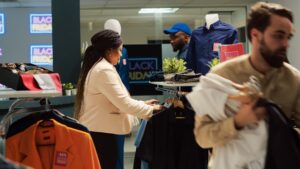Thought Leadership
Black Friday Retail Strategy: Balancing Customer Experience and Cost Efficiency
September 22, 2025 in Field Managing in Retail, Retail Execution, Thought Leadership

Black Friday remains the most critical sales event of the year for specialty retailers. Stores see record traffic, online orders spike, and staff are under pressure to deliver both strong sales and seamless customer experiences. At the same time, labor shortages and rising operational costs mean that retailers cannot afford to overstaff. The question is how to balance customer experience with cost efficiency when every labor hour matters.
Why balance matters
Many retailers either focus on cutting labor costs or on maximizing service. Black Friday requires a balance between the two.
Focusing only on cost efficiency risks long checkout lines, frustrated customers, and lost sales.
Focusing only on customer experience drives up labor costs, which cuts into margins on heavily discounted products.
A strong Black Friday retail strategy prioritizes the service area that impact customers most, while using scheduling and process discipline to eliminate wasted labor.
Many retailers delay staffing and inventory decisions for Black Friday but Forbes highlights that early preparation is key. By forecasting demand in advance, aligning inventory, and keeping operations teams and customer-facing staff in sync, retailers improve their ability to balance cost efficiency with customer satisfaction.
Pre-Black Friday retail strategy planning and forecasting

Black Friday retail strategies to protect customer experience
1. Prioritize checkout speed
Strategy: Reallocate labor from low-value tasks (such as backroom recovery) to registers during peak hours.
Example: Managers and seasonal staff step onto tills between 11 a.m. and 3 p.m. to keep lines moving.
2. Enhance floor presence
Strategy: Position associates in high-traffic zones like entrances, fitting rooms, and product displays.
Example: A greeter near electronics answers quick questions and manages line flow, preventing bottlenecks.
3. Support Buy Online, Pick Up In Store (BOPIS)
Strategy: Dedicate cross-trained staff to curbside and in-store pickup during rush periods.
Example: Two associates focus only on order pickups between 10 a.m. and 2 p.m.
4. Streamline wayfinding and communication
Strategy: Use signage, digital screens, and quick announcements to reduce repetitive customer questions.
Example: Signs at the entrance highlight doorbuster deals and direct shoppers to key aisles.
5. Boost associate morale in real time
Strategy: Recognition and small incentives keep staff engaged and positive with customers.
Example: Supervisors give on-the-spot shoutouts and break vouchers during peak periods.
Black Friday retail strategies to protect cost efficiency
1. Schedule to peaks, not flat coverage
Strategy: Concentrate staffing around the busiest 4-5 hours instead of spreading coverage evenly.
Example: Labor is stacked 10 a.m. – 3 p.m., while early morning and evening are lean.
2. Cross-train associates
Strategy: Train staff to switch between registers, floor service, and BOPIS as needed.
Example: Associates move from fitting rooms to checkout once lines reach 10+ people.
3. Delay or automate non-essential tasks
Strategy: Push replenishment, cleaning, and planogram resets to quieter hours or overnight.
Example: Stockroom teams replenish after close so daytime staff stay customer-facing.
4. Tap seasonal or flexible labor pools
Strategy: Hire float workers or part-timers who cover only high-demand windows.
Example: A seasonal associate works just a 6-hour Black Friday midday shift.
5. Monitor and adjust in real time
Strategy: Use dashboards or foot traffic counters to shift staff as quickly as needs change.
Example: If BOPIS orders spike, two associates are pulled from recovery to order fulfillment.
Common mistakes to avoid for Black Friday
Even the best plans can stumble if retailers fall into common traps:
–Overstaffing during slow periods – Leads to unnecessary labor costs without improving service.
–Undertraining seasonal staff – Causes errors, slower checkout, and frustrated customers.
-Failing to adjust staffing in real time – Missed opportunities to redeploy associates to peak areas can hurt both efficiency and customer experience.
Focusing on these pitfalls helps ensure your Black Friday retail strategy delivers results while avoiding costly mistakes.
Conclusion: Implementing Black Friday strategies that work
A well-executed Black Friday retail strategy requires careful planning, clear communication, and real-time adjustments. By balancing customer experience with cost efficiency, retailers can maximize sales, improve satisfaction, and reduce wasted labor.
Incorporating forecasting, technology, and cross-trained staff into your strategy ensures your team is prepared for peak traffic and post-Black Friday recovery. Retailers who treat Black Friday as a strategic opportunity rather than a single-day event can drive stronger results and set the tone for the entire holiday season.
Book a demo with us today.
Recent Blog Posts

Black Friday Strategies for Retailers: Post-Event Analysis to Improve Holiday Operations
Black Friday is not the finish line for retailers It is the start of the holiday season Data from sales performance, staffing allocation, inventory management, and customer behavior provides a...
READ MORE
Black Friday Retail Strategy: Balancing Customer Experience and Cost Efficiency
Black Friday remains the most critical sales event of the year for specialty retailers Stores see record traffic, online orders spike, and staff are under pressure to deliver both strong sales and...
READ MORE
The Virtual Field Manager: Boost Employee Engagement in Retail Through Remote Leadership
TL;DR: Retailers are turning to virtual field management to keep stores aligned, empowered, and performing A Virtual Field Manager combines coaching, recognition, and real-time oversight—without...
READ MORESchedule a Consultation With Our Retail Experts Today
Contact us today for a 15-minute conversation on how StoreForce can help you drive store performance and execution for less than the cost of 1 transaction per week. Learn how retailers all over the world are driving performance and customer experience through our solution made exclusively for Specialty Retail.
